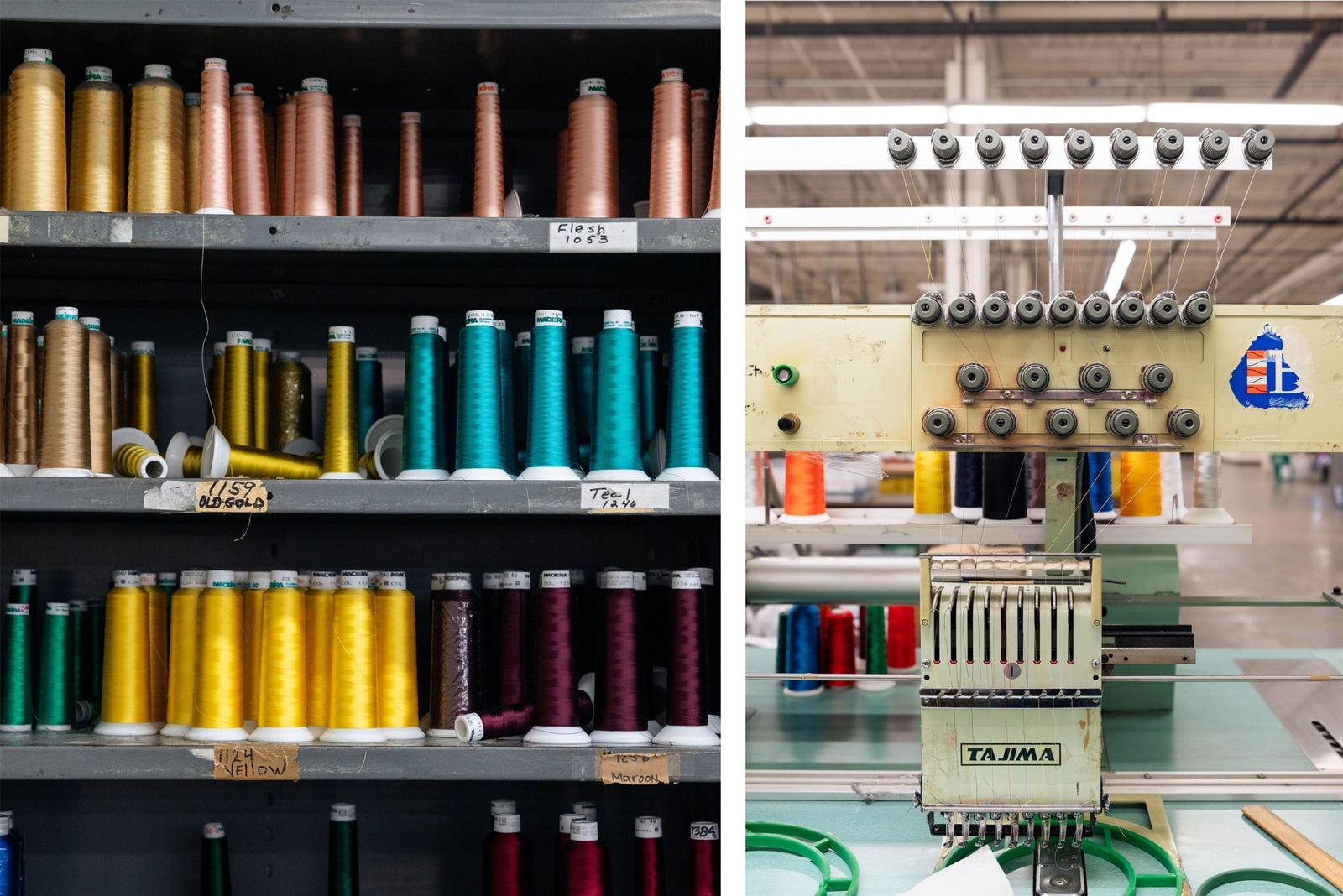Japan has a long and rich history of pioneering the stationery and office supply field, blending innovation with an unwavering commitment to craftsmanship. From meticulously engineered writing instruments to exquisitely designed notebooks and paper, Japanese stationery brands have set the global standard for quality and functionality. With an eye toward groundbreaking technologies and timeless aesthetics, these companies continue to shape the way people write, create, and organize their thoughts.
Kamoi Kakoshi: From Industrial Adhesives to Artful Crafting
Founded in 1923 by Toshiro Kamoi, Kamoi Kakoshi Co., Ltd. began as a manufacturer of flypaper products. Over time, the company expanded its adhesive expertise into industries such as automotive and construction, developing specialized masking tapes. A serendipitous collaboration with three Tokyo-based crafters led to the 2008 launch of "mt" (short for "masking tape")—a decorative line featuring an array of colors and patterns. This shift transformed Kamoi Kakoshi from an industrial supplier to a beloved brand in the stationery and craft markets and so began the MT Washi line.
This spring, Boston General Store’s Office Club will feature the MT Washi Retro Design series, inspired by Kamoi’s original flypaper products. These tapes beautifully bridge the company’s rich history with contemporary creativity, making them a special addition to any project.



Kokuyo: Timeless Utility in Design
Founded in 1905 by Zentaro Kuroda in Osaka, Kokuyo Co., Ltd. began by producing covers for traditional Japanese account ledgers under the name Kuroda Ledger Cover Shop. By 1908, they expanded to manufacturing the entire ledger, and in 1913, they introduced Western-style account ledgers to support Japan’s transition to double-entry bookkeeping.
Kokuyo’s innovation extended beyond stationery when they entered the office furniture market in 1960 with steel filing cabinets. The company continued to evolve, launching the iconic "Campus" notebook line in 1975 and the staple-free stapler "Harinacs" in 2009. Despite its growth, Kokuyo has remained true to its core mission—creating simple, functional products that withstand the test of time.
Mitsubishi Pencil: Precision in Every Stroke
Founded in 1887 (the 20th year of the Meiji era) by Niroku Masaki, Mitsubishi Pencil Co., Ltd. has been synonymous with quality writing instruments for over a century. Originally focused on producing wooden pencils, the company registered the "Mitsubishi" trademark in 1903, marking the beginning of its legacy. Over the years, it expanded into ballpoint pens, high-grade pencils, and innovative writing tools such as the "uni-ball" rollerball pen (1979) and "POSCA" markers (1983).
A defining innovation came in 2008 with the "Kuru Toga" mechanical pencil, featuring an automatic lead rotation mechanism for a consistently sharp point. More recently, in 2024, Mitsubishi Pencil acquired German writing instrument manufacturer Lamy, merging two legacies of excellence.
Sakura: Pioneers of Color and Expression
Founded in 1921 in Osaka, Sakura Color Products Corporation revolutionized the art world in 1925 with "Cray-Pas", the first oil pastel. This innovation provided artists with a new medium that combined the blendability of crayons with the vibrancy of pastels.
Sakura continued to lead in ink technology, introducing "Pigma" ink in 1982—renowned for its archival quality and resistance to fading—and the world’s first gel ink pen, the "Gelly Roll", in 1984. Expanding its range to include watercolors, markers, and colored pencils, Sakura remains a trusted name among artists and writers worldwide.
Their dedication to vibrant colors and unique products makes every Sakura pen or pastel an inspiration. The richness and consistency of their hues bring creative ideas to life with every stroke.



Sailor: The Art of Writing, Perfected
In 1911, Kyugora Sakata and his brother founded a company in Hiroshima called Sakata-Manufactory. Inspired by an encounter with a British sailor’s fountain pen, Kyugora later changed the name to Sailor. The company made history in 1948 by introducing Japan’s first domestically produced ballpoint pens. They continued innovating with plastic injection molding for mass production in 1949 and introduced 21-karat gold nibs in the 1960s, setting a new standard in fountain pen craftsmanship.
The launch of the 1911 series in 1981 cemented Sailor’s reputation for quality and elegance. Their pens embody the finest elements of Japanese artistry and precision, making every writing experience a tribute to heritage and innovation.

 .
. 
Pilot: Innovation That Guides the Way
Founded in 1909 by engineers Ryosuke Namiki and Masao Wada, Pilot received their first patent for a product titled Namiki Ruling Pen. The ruling pen, a writing instrument used for drawing and cartography, was designed to store ink in the pen itself, novel for its day. The company officially formed as Namiki Manufacturing Co., Ltd. in 1918. During this period they were known for manufacturing and selling the first 14-carat gold fountain pen nib and fountain pen made entirely in Japan.
Namiki officially changed its name to the Pilot Pen Co., Ltd in 1938 and was named after a flagship leading a fleet—a metaphor for the company’s pioneering spirit. In 1963, they revolutionized the fountain pen industry with the "Capless" (Vanishing Point), a fully retractable nib pen that combined elegance with convenience.
Pilot’s commitment to quality and innovation has resulted in a diverse range of writing instruments, from everyday pens to luxury designs. Their vibrant colors and consistent ink flow make their products a staple for creatives and professionals alike.
Tombow: Precision and Elegance in Every Line
Founded in 1913, Harunosuke Ogawa opened his first shop, Harunosuke Ogawa Shoten, in the Asakusa area of Tokyo. This opening coincides with the launch of the Harunosuke Ogawa Pencil (the H.O.P).
Tombow Pencil Co., Ltd. has embodied Japanese craftsmanship since its inception. The company’s name, derived from Tonbō (dragonfly), symbolizes agility and precision. In 1927, they established an integrated production facility in Tokyo to ensure strict quality control.
Tombow diversified in 1958 by introducing ballpoint pens and gained global recognition in 1969 with the launch of the MONO eraser, one of the world’s most beloved erasers. The 1986 introduction of the ZOOM series further cemented Tombow’s reputation for stylish yet functional writing tools.
Tomoe River: A Paper Made For Ink
First developed in 1981 by Tomoegawa Paper Co., Ltd.—which was founded in 1914 to produce electrical insulating paper—Tomoe River Paper was originally designed for compact Bible printing. The original producer of the paper was located on the banks of the Tomoe River, hence the name of the paper. Its ultra-thin yet durable nature quickly gained acclaim among fountain pen enthusiasts for its smooth surface and ability to showcase ink characteristics without feathering or bleed-through.
Although production challenges lead to its discontinuation in 2021, Tomoe River Paper is made today by Sanzen Paper, a subsidiary of Chuetsu Pulp. Sanzen acquired the rights to continue manufacturing Tomoe River Paper, and it remains a favorite for those who appreciate fine writing experiences.
Midori: The Beauty of Simplicity
Founded in 1950 as Midori Shokai Co., Ltd., Midori quickly established itself as a leader in high-quality paper products. The name "Midori", meaning "green" in Japanese, symbolizes growth and vitality.
In 1961, the company introduced Japan’s first pocket-sized notepad, the Diamond memo pad. Japan was in the midst of a period of rapid economic growth. At the time, notepads were usually placed by phones or on desks. The Diamond memo pad was Japan’s first portable notepad, designed for on-the-go use by allowing writing on both sides. It also featured a sweat-resistant cover and a compact size that fit perfectly in shirt pockets.
The launch of the MD Notebook in 2008, featuring their time-tested MD paper, reaffirmed Midori's dedication to superior writing materials. Now part of Designphil Inc., Midori continues to blend thoughtful design with exceptional craftsmanship, making each product a pleasure to use.
Heritage, Quality, and Limitless Innovation
Japanese stationery brands have long set the standard for quality, functionality, and aesthetic excellence. Each of these companies has contributed to the evolution of writing and its many tools, blending time-honored craftsmanship with forward-thinking innovation. If you’re looking for precision in a fine-tipped pen, the smooth feel of specialty paper, or the practicality of an ergonomic stapler, Japan’s stationery makers have the tools to make everyday tasks feel extraordinary. The dedication to detail and excellence in design ensures that these tools are not just practical, but also a joy to use, inspiring creativity and efficiency for generations to come.



